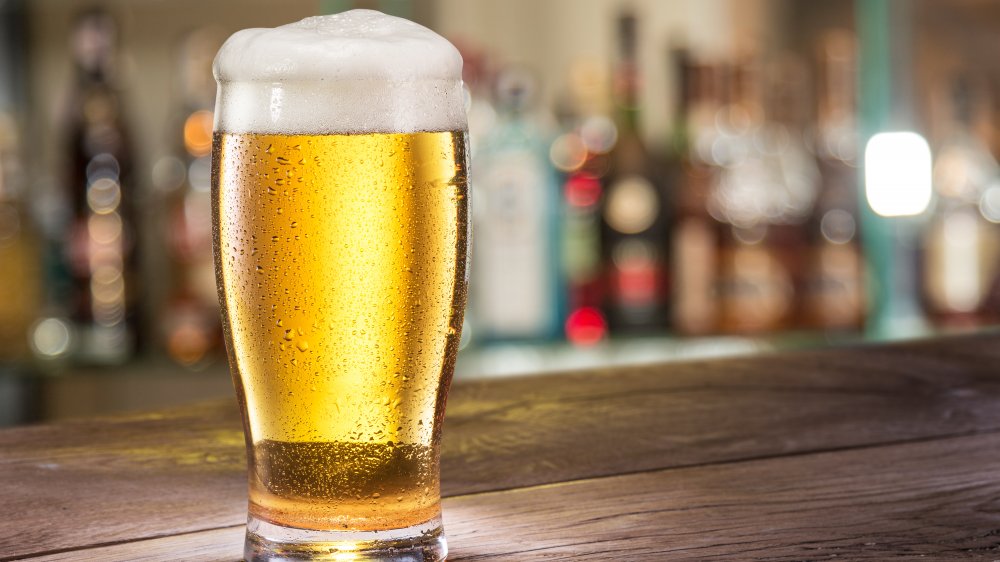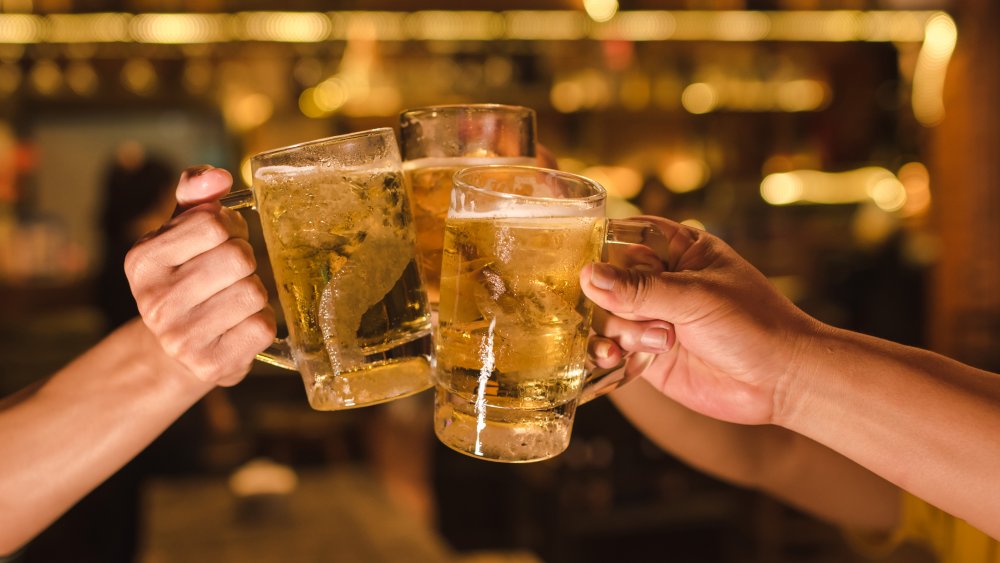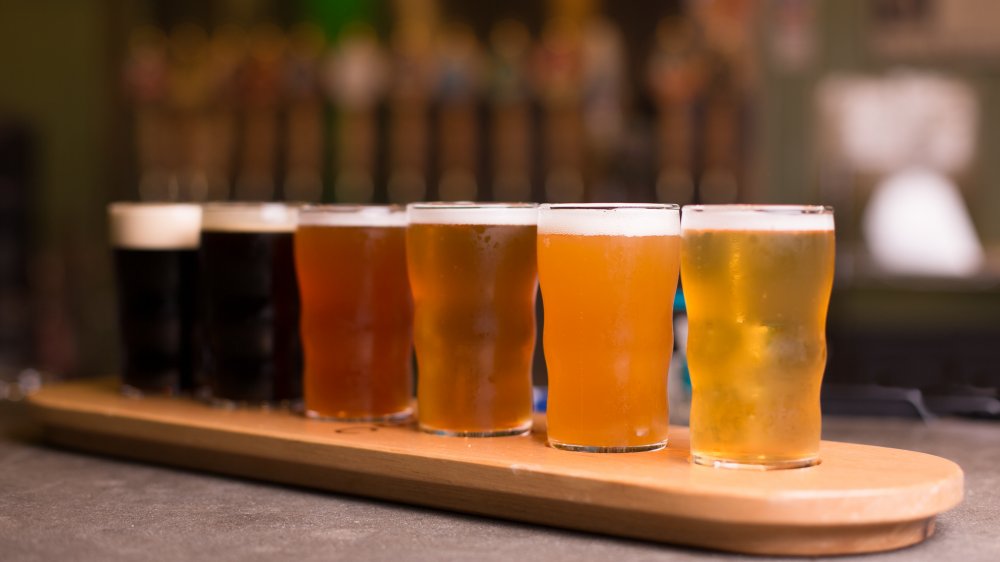The Real Difference Between Regular Beer And Light Beer
Light beers have gotten a bad rap over the years. Detractors have claimed they taste "like pool water" and are "usually overpriced" (via Delish). Taste testers have admitted that, for some beer enthusiasts, "nothing could sound worse than light beers" (via Wide Open Eats).
But those vocal critics don't change the fact that light beers remain by far the most popular pours in the nation. At the close of 2019, Syracuse.com reported that light beers — Bud Light, Miller Lite, Coors Light, and Michelob Ultra, respectively — made up the top four of draft beer sales, with light styles responsible for 48.5 percent of the "pour volume" nationwide. Meanwhile, according to USA Today, the best-selling three beers by volume in 2018 were Bud Light, Coors Light, and Miller Lite, together topping 53 million barrels sold.
However, the perception of light beers may be changing as more craft brewing companies look to hop on the light-beer bandwagon and snatch some market share from the mega-brewers. Food & Wine declared 2019 as the year "light beer got good," thanks to smaller producers' offerings — despite more-established light varieties already making up almost half of beer consumption.
The American thirst for light beer sometimes boils down to a question of taste (or lack thereof), sometimes to a desire for fewer calories or less alcohol. But is there actually a big difference between light and regular beer?
The making of light beer
Light beer can mean different things to different people. Craft Beer & Brewing notes that the label can denote fewer carbs or a lower ABV (which translates to fewer calories), and the Alcohol and Tobacco Tax and Trade Bureau (TTB) requires that light beers reflect "a meaningful decrease in calories compared with a reference full-strength version." The TTB also mandates that brewers must state those related details (think calories, fat, and carbs) on the packaging.
How do brewers reduce those numbers? There are a few methods that make light beer, well, lighter. Food & Wine explains one process, used by brewers like Sam Adams, in which enzymes are destroyed during the brewing process to "lower the amount of fermentable sugars," which in turn lowers both ABV and calories.
Meanwhile, Craft Beer & Brewing points out some other possible methods: diluting regular beer with water; reducing the size of a serving; or introducing "exogenous brewing enzymes into the mash or fermenting beer to break down most of the carbohydrates to simple sugars" before diluting with water (this last approach is typically what creates beers labeled "low-carb").
Are light beers healthier?
Livestrong explains that the average 12-ounce regular beer contains 153 calories, compared to 103 calories for light beer, which also cuts carb counts by more than half, compared to regular beer.
However, some reports have noted that drinkers of light beer tend to consume more beers overall than those who choose standard varieties (via Convenience Store News). Perhaps that's because, as The Spruce Eats notes, to consume the same amount of alcohol, you'd potentially have to drink twice as much. Finally, "light" is a relative term — each brand's calories and carb counts differ — and some posit that beer's suspected health benefits may not translate to light varieties (via Greatist).
Though the debate around light beers' appeal will surely rage on, they've been making their mark for decades as what some have called "the greatest marketing gimmick the world has ever seen" (via Atlas Obscura). And, for many American beer drinkers, that gimmick is still working like a charm.


